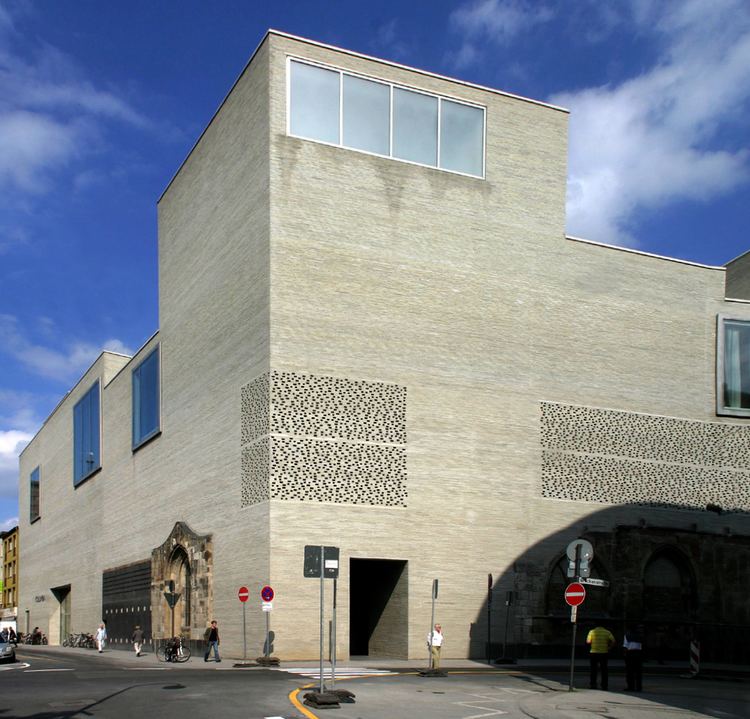Phone +49 221 9331930 | Founded 1853 | |
 | ||
Hours Open today · 12–5PMFriday12–5PMSaturday12–5PMSunday12–5PMMonday12–5PMTuesdayClosedWednesday12–5PMThursday12–5PM Similar Wallraf‑Richartz Museum, Museum Ludwig, Therme Vals, Kunsthaus Bregenz, Romano‑Germanic Museum Profiles | ||
Peter zumthor speaks about museum kolumba cologne part 1 2
The Kolumba (previously Diözesanmuseum, "Diocesan Museum") is an art museum in Cologne, Germany. It is located on the site of the former St. Columba church, and run by the Archdiocese of Cologne. It is one of the oldest museums in the city, alongside the Wallraf-Richartz Museum.
Contents
- Peter zumthor speaks about museum kolumba cologne part 1 2
- Kolumba mwingira usiondoke flv
- History
- Collection
- Awards
- References
Kolumba mwingira usiondoke flv
History
The museum was founded by the Society for Christian Art in 1853, and taken over by the Archdiocese of Cologne in 1989.
Until 2007 it was located near Cologne Cathedral. Its new home, built from 2003–07, was designed by Peter Zumthor and inaugurated by Joachim Meisner. The site was originally occupied by the romanesque Church of St. Columba, which was destroyed in World War II and replaced in 1950 by a Gottfried Böhm chapel nicknamed the "Madonna of the Ruins". The new structure Zumthor built for the museum now shares its site with the ruins of the Gothic church and the 1950s chapel, wrapping a perforated grey brick facade like a cloak around both, and also around the museum. The sixteen exhibition rooms possess varying qualities with regard to incoming daylight, size, proportion, and pathways. The work on the project yielded the following reduction: light gray brick walls (Kolumba stones) and clay plaster, flooring made of Jura limestone, terrazzo, and mortar, ceilings made of a poured mortar shell, window frames, doors, casings and fittings of steel, wall paneling and furniture of wood, textiles and leather, curtains of leather and silk.
Collection
The collection includes paintings, drawings, prints, sculptures, decorative art and religious icons from Late Antiquity to the present. Apart from a few works on permanent display, the presentation features a regularly changing selection of the museum's holdings. The items are generally displayed without accompanying text, and in no particular chronological or stylistic order.
Highlights include:
